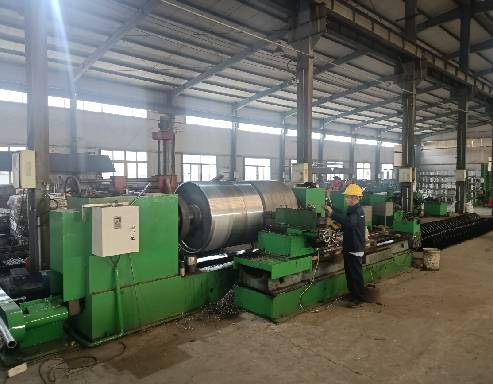 Afrikaans
Afrikaans  Albanian
Albanian  Amharic
Amharic  Arabic
Arabic  Armenian
Armenian  Azerbaijani
Azerbaijani  Basque
Basque  Belarusian
Belarusian  Bengali
Bengali  Bosnian
Bosnian  Bulgarian
Bulgarian  Catalan
Catalan  Cebuano
Cebuano  Corsican
Corsican  Croatian
Croatian  Czech
Czech  Danish
Danish  Dutch
Dutch  English
English  Esperanto
Esperanto  Estonian
Estonian  Finnish
Finnish  French
French  Frisian
Frisian  Galician
Galician  Georgian
Georgian  German
German  Greek
Greek  Gujarati
Gujarati  Haitian Creole
Haitian Creole  hausa
hausa  hawaiian
hawaiian  Hebrew
Hebrew  Hindi
Hindi  Miao
Miao  Hungarian
Hungarian  Icelandic
Icelandic  igbo
igbo  Indonesian
Indonesian  irish
irish  Italian
Italian  Japanese
Japanese  Javanese
Javanese  Kannada
Kannada  kazakh
kazakh  Khmer
Khmer  Rwandese
Rwandese  Korean
Korean  Kurdish
Kurdish  Kyrgyz
Kyrgyz  Lao
Lao  Latin
Latin  Latvian
Latvian  Lithuanian
Lithuanian  Luxembourgish
Luxembourgish  Macedonian
Macedonian  Malgashi
Malgashi  Malay
Malay  Malayalam
Malayalam  Maltese
Maltese  Maori
Maori  Marathi
Marathi  Mongolian
Mongolian  Myanmar
Myanmar  Nepali
Nepali  Norwegian
Norwegian  Norwegian
Norwegian  Occitan
Occitan  Pashto
Pashto  Persian
Persian  Polish
Polish  Portuguese
Portuguese  Punjabi
Punjabi  Romanian
Romanian  Russian
Russian  Samoan
Samoan  Scottish Gaelic
Scottish Gaelic  Serbian
Serbian  Sesotho
Sesotho  Shona
Shona  Sindhi
Sindhi  Sinhala
Sinhala  Slovak
Slovak  Slovenian
Slovenian  Somali
Somali  Spanish
Spanish  Sundanese
Sundanese  Swahili
Swahili  Swedish
Swedish  Tagalog
Tagalog  Tajik
Tajik  Tamil
Tamil  Tatar
Tatar  Telugu
Telugu  Thai
Thai  Turkish
Turkish  Turkmen
Turkmen  Ukrainian
Ukrainian  Urdu
Urdu  Uighur
Uighur  Uzbek
Uzbek  Vietnamese
Vietnamese  Welsh
Welsh  Bantu
Bantu  Yiddish
Yiddish  Yoruba
Yoruba  Zulu
Zulu Different Types of Conveyor Belt Pulleys and Their Applications in Industries
Types of Conveyor Belt Pulleys
Conveyor belt systems are essential in various industries, used to transport materials efficiently across numerous applications, from factories to mines. One of the most critical components of a conveyor system is the pulleys. Pulleys are essential for driving the conveyor belt, guiding it, and keeping it aligned. Understanding the different types of conveyor belt pulleys is vital for selecting the right components for specific applications.
1. Drive Pulleys
Drive pulleys, often referred to as head pulleys, are located at the discharge end of the conveyor. They play a crucial role in propelling the conveyor belt. These pulleys are coupled with a motor that provides the necessary torque to move the belt. Drive pulleys can be designed with various surface textures, such as rubberized, to enhance traction between the belt and the pulley. This grip helps prevent slippage, ensuring efficient power transfer throughout the conveying process.
2. Idler Pulleys
Idler pulleys are used to support the conveyor belt and maintain its tension and alignment. Positioned in various locations along the conveyor system, idler pulleys are crucial for preventing sagging and reducing wear on the belt. They can be classified into several types, such as return idlers, troughing idlers, and impact idlers, each serving different purposes.
- Return Idlers These are positioned on the underside of the conveyor to support the belt as it returns to the drive pulley. They ensure that the belt maintains its shape and does not sag excessively. - Troughing Idlers Typically found at loading zones, troughing idlers incline the belt to form a ‘trough’ shape. This design helps contain materials on the belt during transportation, providing better load handling and minimizing spillage.
- Impact Idlers Located where material drops onto the belt, impact idlers are designed with additional cushioning to absorb the forces generated by heavy loads. They help prevent damage to the belt and enhance its longevity.
3. Snub Pulleys
types of conveyor belt pulleys

Snub pulleys are not primarily intended to drive or support the belt but are instead employed to adjust its direction or belt tension. Positioned strategically throughout a conveyor system, snub pulleys help to increase friction between the belt and the drive pulley, enhancing power transmission. They help maintain the appropriate tension in the belt, which is crucial for an efficient operation.
4. Tail Pulleys
Located at the end of the conveyor, tail pulleys are crucial for returning the belt back for continuous operation. They often serve as a return point for the belt and are constructed to support the weight of the materials being transported. Tail pulleys can be designed to improve belt alignment, helping to prevent misalignment and wear over time.
5. Lagging Pulleys
Lagging is a process that enhances the surface of a pulley to improve the grip between the pulley and the conveyor belt. Lagging can be applied to both drive and non-drive pulleys. This coating, which could be made from rubber or ceramic materials, helps to reduce slippage and increases the wear resistance of the pulleys. This results in less maintenance and longer service life for both the belt and the pulleys.
6. Specialty Pulleys
In addition to the standard types, there are also specialty pulleys designed for unique applications. For example, magnetic pulleys can be integrated into systems where ferrous materials need to be separated from bulk material. Similarly, spiral pulleys might be designed for vertical conveying in specific industrial settings.
Conclusion
Understanding the various types of conveyor belt pulleys is crucial for designing a conveyor system that meets operational demands efficiently. Each type of pulley serves a specific purpose and contributes to the overall functionality of the conveyor belt system. By selecting the right combination of pulleys based on the specific requirements of an application, businesses can enhance their material handling efficiency, reduce maintenance costs, and increase the longevity of their equipment. Whether it’s a drive pulley, idler, snub, tail, or specialty pulley, each component plays an integral role in ensuring smooth and effective operations in the modern industrial landscape.
-
Revolutionizing Conveyor Reliability with Advanced Rubber Lagging PulleysNewsJul.22,2025
-
Powering Precision and Durability with Expert Manufacturers of Conveyor ComponentsNewsJul.22,2025
-
Optimizing Conveyor Systems with Advanced Conveyor AccessoriesNewsJul.22,2025
-
Maximize Conveyor Efficiency with Quality Conveyor Idler PulleysNewsJul.22,2025
-
Future-Proof Your Conveyor System with High-Performance Polyurethane RollerNewsJul.22,2025
-
Driving Efficiency Forward with Quality Idlers and RollersNewsJul.22,2025





























